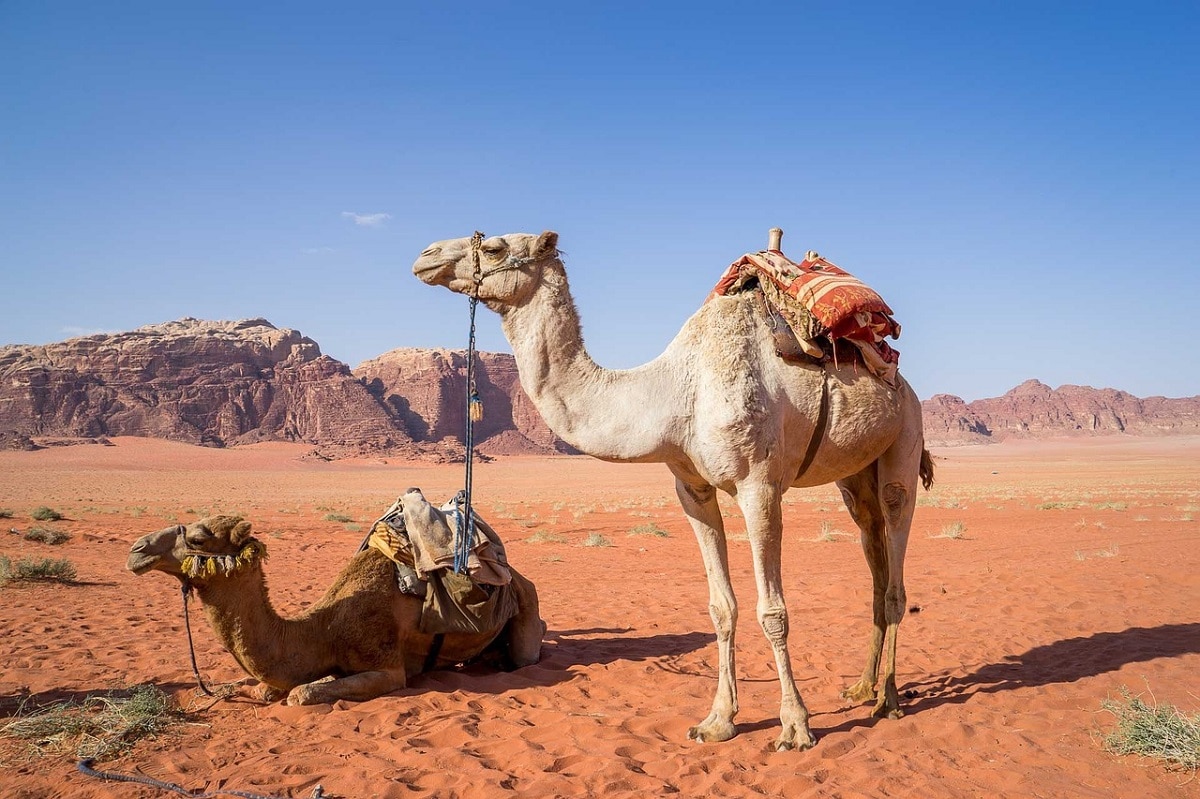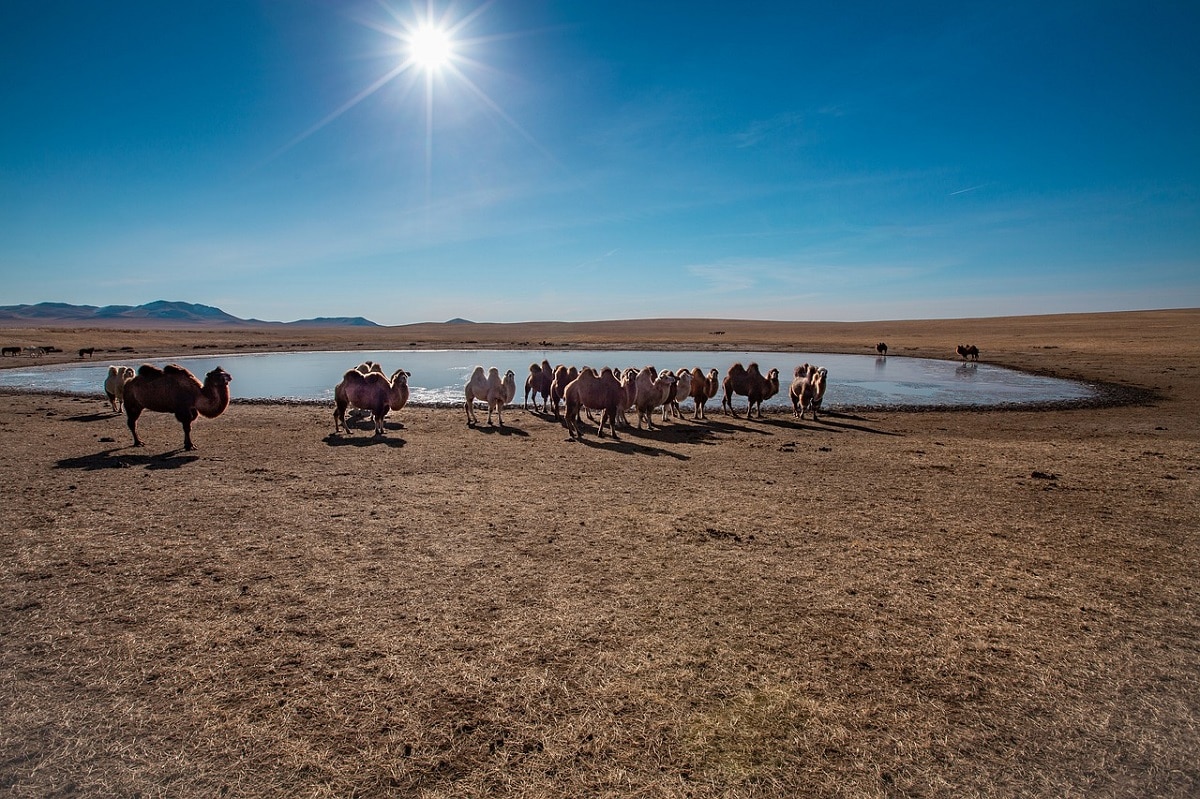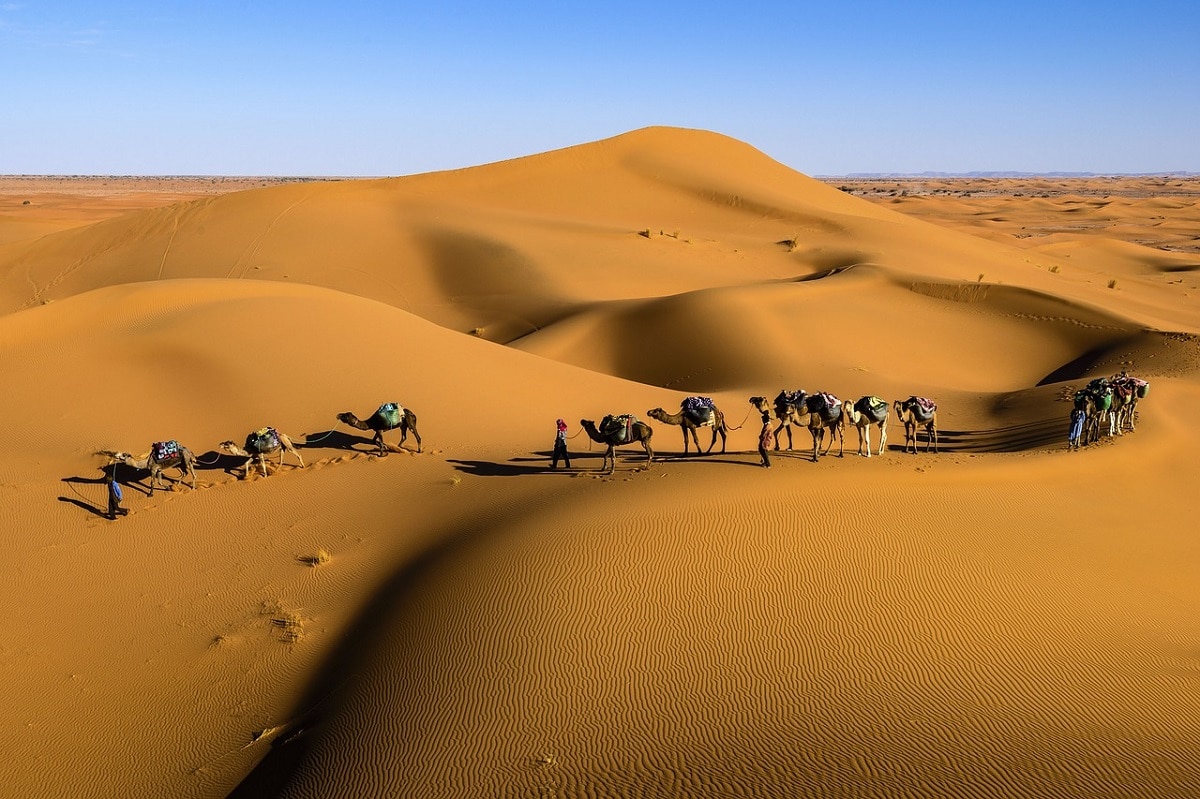
Since very ancient times, probably around 3.000 years ago, humans have been using the camel as an efficient means of transport in certain regions of the world.
These hoofed animals are famous for fat deposits (humps) protruding from its back, were domesticated by man thousands of years ago. They have been, and still are, a source of food (milk and meat), while their skin has traditionally been used to make clothing. But above all, its most important use is as a means of transport. All thanks to their particular anatomy, specially adapted to the desert habitats.
How many species of camels are there?
However, it should be noted that not all camels in the world are the same, nor are they used as a means of transportation. They exist in the world three species of camels:
- Bactrian camel (Camelus Bactrianus), which lives in Central Asia. Larger and heavier than the other species. It has a double hump and its skin is woolly.
- Wild bactrian camel (wild camel), also with two humps. It lives in freedom in the desert plains of Mongolia and in certain areas of the interior of China.
- Arabian camel o Dromedario (Camelus dromedarius), the most popular and numerous species, with an estimated world population of 12 million. It has a single hump. It is found in the Sahara region and the Middle East. It has also been subsequently introduced in Australia.
A camel can reach speeds of up to 40 kilometers per hour and is able to withstand long periods of time without ingesting a single drop of water. The dromedary for example can live perfectly simply drinking once every 10 days. Its resistance to heat is impressive: it can survive in the hottest of deserts even after losing up to 30% of its body mass.

Bactrian camels drinking
How do these animals manage to live with so little water? The secret is in the fat that accumulate in their humps. When the camel's body needs hydration, the fatty tissues in these deposits are metabolized, releasing water. On the other hand, your kidneys and intestines have a great capacity for reabsorbing liquids.
But that does not mean that the camel can live without water. When it's time to drink, a 600 kg adult camel can drink up to 200 liters in just three minutes.
The "ship of the desert"
This great resistance to thirst and heat, impossible to find in most mammals, has crowned this animal as man's best friend to survive in the desert.
For centuries, caravans Traders used the camel to cross large desert areas. Thanks to him, it was possible to establish routes and commercial and cultural contacts that would have been impossible otherwise. In this sense, it should be noted that the camel has been a fundamental element for the development of many human communities in Asia and North Africa.
If the desert was an ocean of sand, the camel was the only way to navigate in it and the guarantee of reaching a safe harbor. For this reason it is popularly known as the "Ship of the desert".

Camel caravan crossing the desert
Even today, when all-terrain vehicles and GPS have succeeded in replacing it as a means of transportation, the camel is still used by many Bedouin tribes. However, it is more common to see him in certain countries in his new role as tourist attraction than as a vehicle.
It is usual that, on their trips to destinations such as Morocco, Tunisia, Egypt or the United Arab Emirates, tourists hire camel excursions through the desert. With them (always in the hands of experienced guides), travelers in search of emotions enter empty and inhospitable territories, later sleeping in tents under the starry sky of the desert. The camel is, after all, the symbol of a long-forgotten time of romantic travels and mysterious adventures.
The camel as a weapon of war
In addition to its proven effectiveness as a means of transportation, the camel has also been used throughout history as war weapon. Already in Antiquity the Achaemenid Persians They discovered a quality of these animals that was very useful in their warfare: his ability to scare horses.
Thus, the participation of warriors mounted on camels in many battles became common, the perfect antidote to nullify enemy cavalry. Many ancient documents attest to the role of camels in the conquest of the kingdom of Lydia in the XNUMXth century BC.
Camels and dromedaries have been part of the armies that have fought in the North Africa and the Middle East from before Roman times and until very recent times. Even the army of the United States created in the XNUMXth century a special camel unit that he deployed in the state of California.
that if that is another waveaaaaaaaaaa
that if that is another waveaaaaaaaaaa
that if that is another waveaaaaaaaaaa